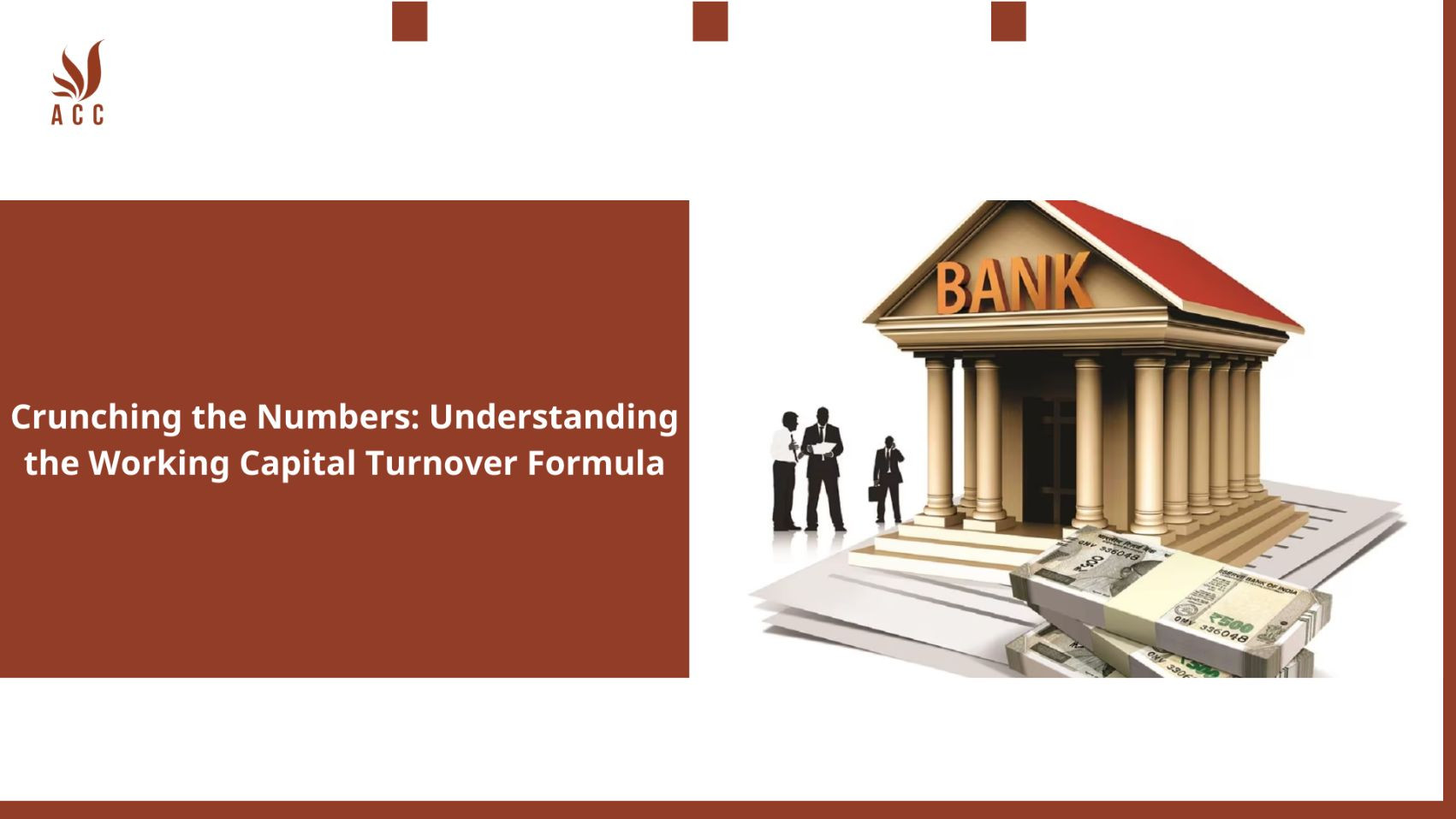
1. Crunching the Numbers: Understanding the Working Capital Turnover Formula
The financial success of any company hinges on its ability to manage its resources effectively. One vital metric that reflects this efficiency is the Working Capital Turnover Ratio. In this article, we'll delve into what this ratio means, how to calculate it, and why it is crucial for businesses of all sizes.
2. Deciphering the Working Capital Turnover Ratio
The Working Capital Turnover Ratio serves as a barometer for a company's adeptness at utilizing its working capital. In simpler terms, it offers insight into how efficiently a company allocates its resources to generate revenue.
3. Crunching the Numbers: How to Calculate the Working Capital Turnover Ratio
To grasp the ratio's significance, it's essential to understand the formula behind it. The Working Capital Turnover Ratio is determined by dividing a company's net annual sales by its average working capital. Let's break it down step by step:
Working Capital Formula
Working Capital = Total Assets - Total Liabilities
Working Capital Turnover Ratio Formula
Working Capital Turnover Ratio = Net Annual Sales / Average Working Capital
4. What the Ratio Reveals
The Working Capital Turnover Ratio unveils critical insights into your business operations. A higher ratio indicates that your company is using its short-term assets and liabilities efficiently to drive sales. In other words, you're getting more bang for your buck. Conversely, a lower ratio suggests that your business might be investing excessively in accounts receivable and inventory, potentially leading to bad debts or obsolete inventory.
5. Putting It into Practice
One of the most significant advantages of this ratio is its ability to help you gauge your business's performance over time and against industry competitors. By tracking changes in the ratio, you can identify areas for improvement and make more efficient use of your working capital.
6. The Pros and Cons of a High Working Capital Turnover Ratio
Pros
Smooth Operations: A high ratio signifies that your company is running smoothly and efficiently.
Reduced Need for Additional Funding: It indicates that there is limited need for external funding, reducing financial strain.
Competitive Edge: A high ratio can give your company a competitive edge over others in your industry.
Cons
Risk of Insolvency: An extremely high ratio, typically above 80%, may suggest that your company doesn't have sufficient capital to support its growth, potentially leading to insolvency in the future.
7. Unlocking Working Capital through Alternative Financing
As businesses grow, they often require additional working capital. Here are a couple of alternative financing options that can help you access the capital you need without compromising equity:
Revenue-Based Financing
This approach provides working capital in exchange for a percentage of future monthly revenue. Monitoring the Working Capital Turnover Ratio can help ensure optimal use of the working capital acquired through this method.
Venture Debt
Venture debt mirrors a traditional bank loan structure, requiring fixed monthly interest payments. It's an excellent choice for companies experiencing rapid growth and in need of extra working capital.
8. Secure Your Working Capital with Flow Capital
If you're looking for working capital to drive your business forward, Flow Capital can provide up to $4 million in financing. Their team will work closely with you to develop a financing structure tailored to your company's unique needs.
In conclusion, the Working Capital Turnover Ratio is a critical metric for businesses. It not only assesses the efficiency of your resource allocation but also offers valuable insights for improvement. By understanding and optimizing this ratio, you can position your company for greater success in your industry.
9. Why should professionals use ACC Law Firm's capital Service?
- Expertise in Legal Matters: ACC Law Firm specializes in providing legal services, which means they have a deep understanding of the legal intricacies and requirements associated with capital transactions. This expertise can be invaluable when dealing with complex financial and legal matters.
- Customized Solutions: ACC Law Firm is likely to offer tailored solutions to meet the specific needs of professionals. Whether you are an individual or a business, their team can work closely with you to create a financial strategy that aligns with your goals and objectives.
- Risk Management: Capital transactions often involve various risks, including legal and financial risks. ACC Law Firm can help professionals navigate these risks effectively, ensuring compliance with regulations and minimizing potential legal liabilities.
- Regulatory Compliance: Professionals must adhere to various laws and regulations when raising capital or engaging in financial transactions. ACC Law Firm can provide guidance and ensure that all legal requirements are met, reducing the risk of legal disputes or penalties.
- Legal Documentation: Capital transactions typically require extensive legal documentation, such as contracts, agreements, and prospectuses. ACC Law Firm's expertise can help professionals draft and review these documents to protect their interests and ensure accuracy.
Q&A
Question 1: What is the formula for working capital turnover?
Answer 1: The formula for working capital turnover is: Working Capital Turnover = Net Sales / Average Working Capital.
Question 2: What does "Net Sales" represent in the working capital turnover formula?
Answer 2: "Net Sales" represents the total revenue generated from a company's primary operating activities after subtracting any sales discounts, allowances, returns, and allowances for bad debts.
Question 3: What is meant by "Average Working Capital" in the formula?
Answer 3: "Average Working Capital" refers to the average amount of working capital a company has available during a specific period. It is typically calculated by averaging the working capital at the beginning and end of the period, which is Current Assets minus Current Liabilities.
Question 4: How is the working capital turnover ratio used in financial analysis?
Answer 4: The working capital turnover ratio is used in financial analysis to assess how effectively a company utilizes its working capital to generate sales. A higher turnover ratio indicates efficient use of working capital, while a lower ratio suggests inefficiency. It helps analysts evaluate a company's operational efficiency and liquidity management.
Nội dung bài viết:






Bình luận